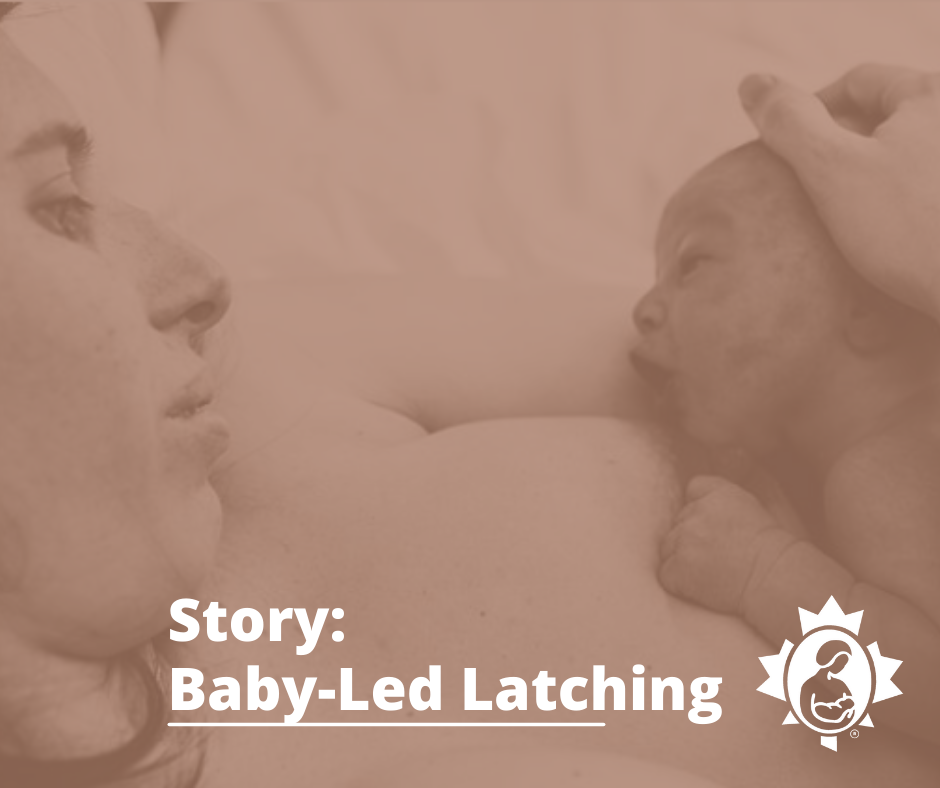
When a mother holds her baby skin-to-skin, upright against her chest, he receives the first cues he needs to initiate latch. In this position, the baby orients himself by looking up at his mother’s face and looking into her eyes. Often, the baby will make some sound and the mother responds – they are making a connection. If the baby is hungry, he will then begin to throw himself to one side, seeking the breast. His mother usually instinctively supports him, by supporting both his shoulders and hips, as he moves down.
As the baby reaches the breast, he will move towards the nipple, and when he feels his chin pressed against the breast and his chest against his mother’s body, he will latch on with an asymmetrical latch – his chin well into the breast, and his bottom jaw covering more of the breast than his top jaw.
It was remarkable to see videos of babies latching themselves this way. Even more remarkable was when I saw this for the first time with a mother and her six-day-old baby girl.
This baby had not latched at all in the hospital, and had only taken the nipple into her mouth briefly on a couple of occasions since she came home. The mother had already removed her shirt, and the baby was wearing just a diaper, so the stage was set. The baby was fussing, so I suggested that the mother try holding her upright against her chest to comfort her. She held her baby up against her shoulder, and after a few seconds, the baby began lifting her head and trying to look at her mother’s face. I watched them make eye contact. A second later, the baby began to bob her head and bounce sideways.
I could see it felt a little awkward, but the mother supported the baby as she moved into position. For a second or two, the baby bobbed her head against the breast, looking for the nipple, and then she latched on and began to suckle. Both parents were amazed. They had no idea that a baby could do this. For the first time ever, the baby fed – and fed well – at the breast.
Babies don’t latch perfectly every time this approach is used – sometimes they are not ready, sometimes there are other problems going on. Once the baby has learned to breastfeed, there is no need to begin every feeding by holding the baby skin-to-skin in the vertical position. Many babies, obviously, do learn to breastfeed just fine when their mothers take a more active role in positioning them at the breast. The baby-led latching approach, however, responds to a baby’s natural instincts, and is especially helpful with a baby who hasn’t latched at all, has never latched well, or who resists being held in a nursing position.
Please consider supporting LLLC.
Written by Teresa Pitman, La Leche League Leader, Co-Author of The Womanly Art of Breastfeeding (8th edition) and Author Preparing to Breastfeed: A Pregnant Woman’s Guide.
